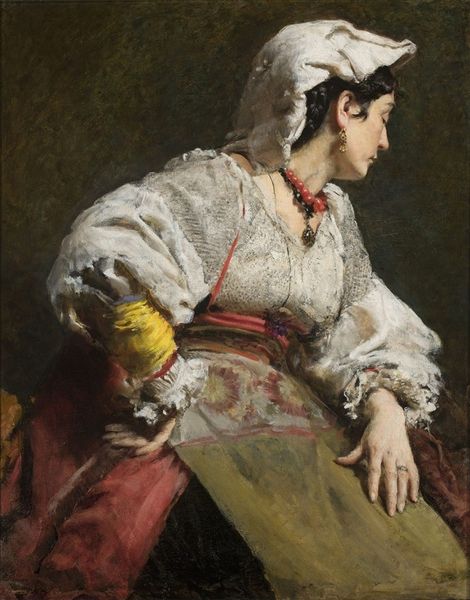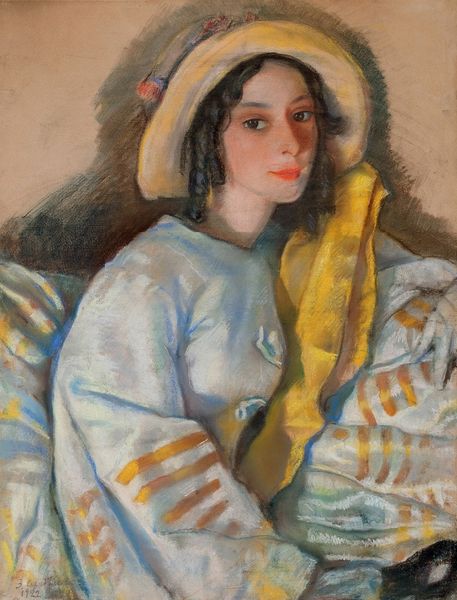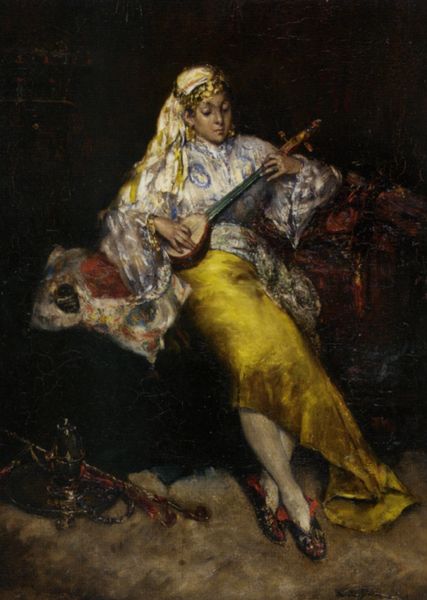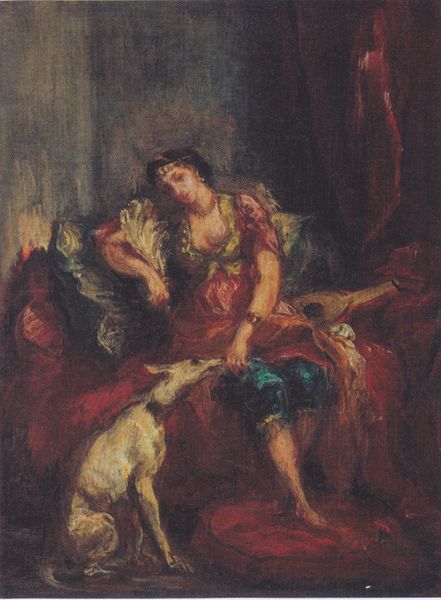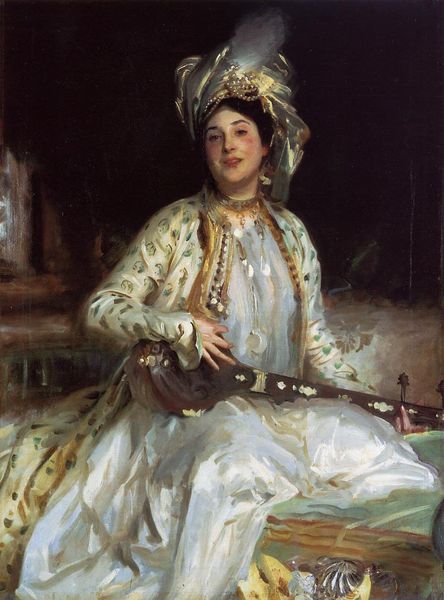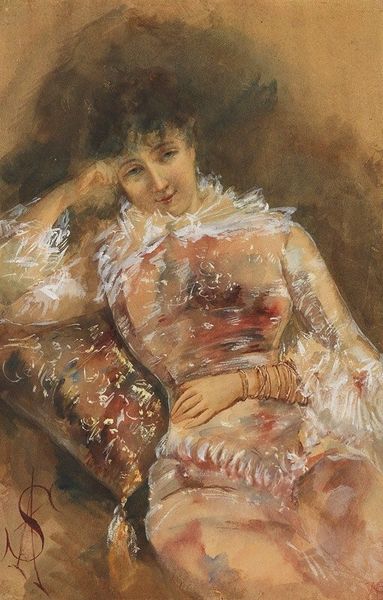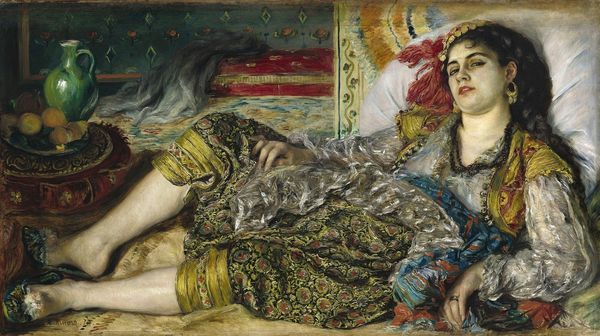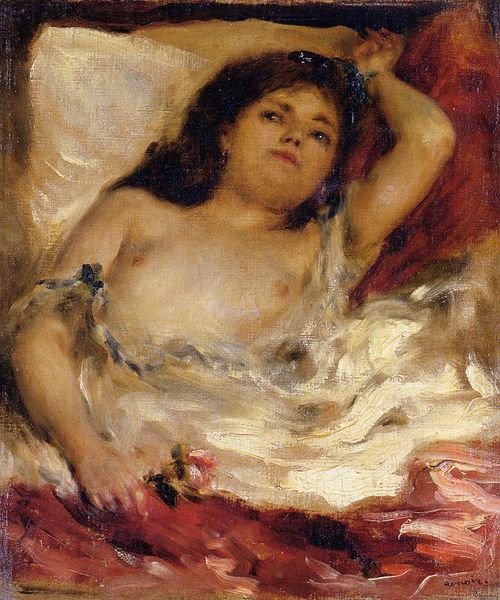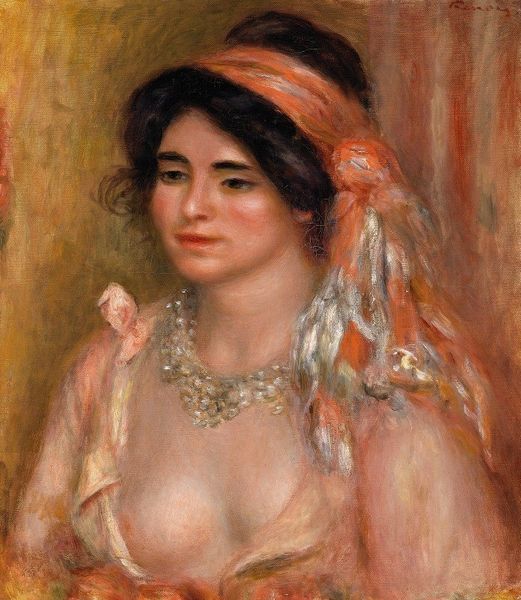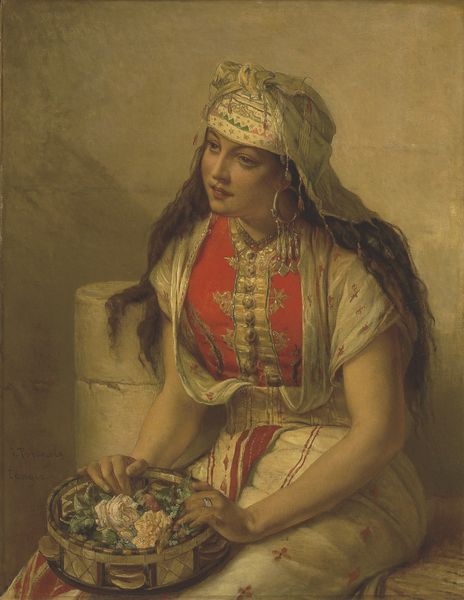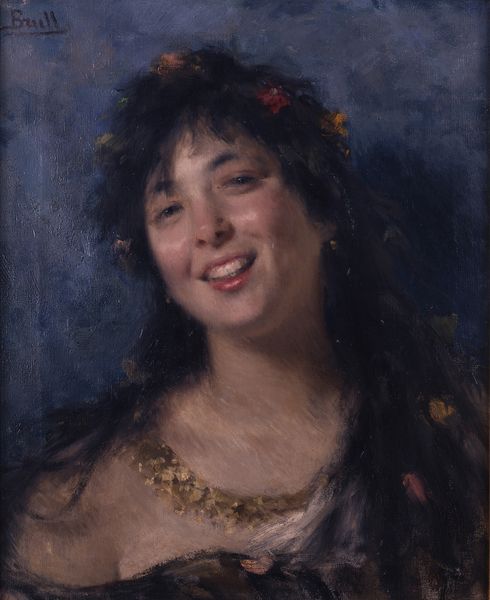
painting, oil-paint, impasto
#
portrait
#
painting
#
oil-paint
#
figuration
#
oil painting
#
impasto
#
orientalism
Dimensions: 99.5 x 89.2 cm
Copyright: Public domain
Curator: This is Romualdo Locatelli’s "Lady with Pipe," painted around 1930 using oil paint. It currently resides in a private collection, capturing a seated woman in what appears to be an Orientalist style. The first impression is rather unsettling. She seems trapped. Editor: Trapped? I find the pose surprisingly self-assured. There's a relaxed confidence there, despite what appears to be the heavy hand of objectification that comes with the orientalist gaze. But there's an interplay happening in that confident, though subtle, gaze. Is she merely available, or is she challenging the presumed dynamics of this painting? Curator: That’s interesting. It does complicate things to consider that possibility. Look at how the impasto technique used gives texture to the fabrics around her. She’s draped in layers, almost like she is protecting herself. Does that clash with your reading? How would you reconcile such apparent defensiveness? Editor: I wouldn't see the fabrics only as a barrier or defense. They speak to status, perhaps a symbol of an in-between position: a concubine perhaps, a member of an elite but not in a conventional way. Think of courtesans and geishas through history—marginalised women wielding substantial political influence from the periphery. That's in the pipe; Locatelli gives it symbolic force. Curator: Yes! That connects the literal act of smoking to something subversive. Tobacco itself carried huge symbolic weight at that time, not just in Europe but especially in the contexts Locatelli drew upon, of empire and commerce. Now, that gaze has new, challenging depths, as the pipe suggests defiance but the composition betrays subjection. The two form a rather uncomfortable duality, but she, by looking back at us, becomes so much more active, more complex. Editor: Exactly. She complicates the whole dynamic—challenging our perception, disrupting traditional codes around who looks at whom, who’s seeing whom and how we judge those perspectives. Ultimately, as with any meaningful art, this compels the viewers to confront our own assumptions about history, agency and representation, or lack thereof.
Comments
No comments
Be the first to comment and join the conversation on the ultimate creative platform.
